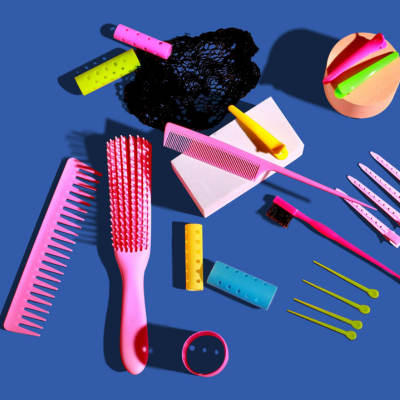- Support 24/7
- +1 (480) 468-4543
- livara@mylivara.com
What is Hair Porosity: A Guide to Understanding Your Unique Hair Characteristics
Can Kids Get Dandruff?
November 19, 2023Maximize Length Retention with Mini-Twists
November 25, 2023Unlocking the secrets of your hair lies in understanding its porosity—a fundamental aspect that influences how your hair responds to products, retains moisture, and, ultimately, reflects its health. In this comprehensive guide, we’ll delve into the intricacies of hair porosity, exploring the different types, methods to determine your porosity level, and crafting a customized care routine.
Understanding Hair Porosity: The Intricate Structure of Your Strands
At the heart of porosity lies the intricate structure of the hair cuticle—the outermost layer of the hair shaft. This cuticle is comprised of overlapping scales, and the arrangement of these scales determines the porosity of your hair.
Low Porosity Hair
- Characteristics: Tightly packed cuticle scales form a protective barrier. Because of its hydrophobic nature, low porosity hair repels water from its surface. It does not easily allow water in, even when immersed in water, and neither does it easily lose the water that is contained within the hair.
- Challenges: Low porosity hair can resist moisture absorption, making it prone to product buildup.
- Care Tips: Use lightweight, water-based products; incorporate heat during deep conditioning to open the cuticle.
Normal/Medium Porosity Hair:
- Characteristics: Cuticle scales are neither too tight nor too loose.
- Benefits: This hair type typically strikes a balance in terms of moisture retention and absorption.
- Care Tips: A versatile range of products can work well. Regular deep conditioning is key for maintaining optimal health.
High Porosity Hair:
- Characteristics: Cuticle scales are more open, allowing for quick moisture absorption but making it prone to losing moisture.
- Challenges: High porosity hair may experience dryness and frizz due to rapid moisture loss.
- Care Tips: Focus on moisture retention with leave-in conditioners, oils, and protein treatments to strengthen the hair shaft.
Why Your Hair Can Become High Porosity and the Challenges It Poses
Causes of High Porosity Hair:
- Chemical Processing: Overexposure to chemical treatments like relaxing, bleaching and coloring can lead to raised cuticle scales.
- Heat Damage: Frequent use of hot styling tools without proper protection can contribute to high porosity.
Challenges of High Porosity Hair:
- Moisture Loss: High porosity hair has a cuticle layer with raised or open scales, allowing moisture to enter the hair shaft easily. While this may sound beneficial for moisture absorption, it also means that the hair can lose moisture just as quickly. As a result, high porosity hair tends to experience dryness, leading to frizz and a lack of defined curls.
- Susceptibility to Damage: The raised cuticle makes the hair more vulnerable to damage from external factors.
Can You Change Your Hair Porosity?
While the desire to alter one’s hair porosity may seem tempting, the reality is that you can’t. Porosity is predominantly influenced by genetic factors, and the fundamental structure of your hair cuticle remains relatively stable throughout your life. This means that the inherent porosity you’re born with is a characteristic that endures. Additionally , as we’ve discussed above, some haircare treatments like relaxing or bleaching may increase your hair’s porosity, a state which may also be difficult to reverse.
Determining Your Hair Porosity: Beyond the Float Test
The float test involves placing clean hair strands in water to determine hair porosity. If the hair floats, it suggests low porosity with tightly sealed cuticles; a slow sink indicates normal porosity, balanced in moisture absorption and retention; and quick sinking may imply high porosity, where cuticles readily absorb water but struggle to retain moisture. While a basic indicator, it’s recommended to consider other factors for a comprehensive understanding of hair porosity.
While the “Float Test” is a common method, it has limitations. It’s entirely possible for different parts of your hair to have varying porosities. This phenomenon is commonly referred to as “differential porosity.” Other methods such as observing your hair’s behavior (such as how quickly it dries or absorbs product), assessing its elasticity, or seeking professional advice could offer you a better understanding of your hair’s unique porosity.
Crafting a Customized Care Routine: Porosity-Centric Strategies
Low Porosity Hair Care:
- Use water-based leave-in conditioners to ensure hydration. We recommend moisture-rich products like our Tsavorite Spritz Moisturizer Hair Spray and Sapphire 2in1 Deep Conditioner and Leave-In Treatment.
- Incorporate steam treatments or heat during deep conditioning to open up the cuticles and allow for product penetration. Our Livara Family Salons offer steaming treatments to enhance your hair’s health. Come by today!
- Clarify the hair with a gentle clarifying shampoo like our Tsavorite Clarifying Treatment Hair Shampoo when need be to prevent product buildup.
Normal/Medium Porosity Hair Care:
- Embrace a balanced approach with a variety of hair care products.
- Deep condition regularly to maintain overall hair health.
- Adjust your routine based on seasonal changes and the specific needs of your hair.
High Porosity Hair Care:
- Seal in moisture with heavier products like hair butters. We just know you’ll love our shea butter-infused Emerald Hair Food.
- Utilize protein treatments to strengthen and repair the hair shaft.
- Avoid regular heat styling, as high porosity hair is much more vulnerable to damage.
Additional Tips for All Porosity Types:
- Regular Trims: Trim your hair’s ends if they have split ends. Doing this prevents further damage up the hair shaft, preserving your hair’s health.
- Protective Styling: Minimize exposure to environmental stressors like dryness or air pollution by incorporating protective styles like cornrows and braids.
- Balanced Diet: Ensure a nutrient-rich diet to support overall hair health. Consume foods rich in protein and biotin to promote hair growth, elasticity and strength.
Conclusion
Understanding your hair’s porosity is a transformative step in your hair care journey. It empowers you to make informed choices about products and practices that cater to your hair’s specific needs. Your hair care routine becomes a personalized ritual that honors the beauty and individuality of your unique strands.
Embrace your unique texture, experiment with different routines, and celebrate the versatility of your hair. With this knowledge in hand, your hair care journey becomes a voyage of self-discovery, where every curl is a testament to the uniqueness that is distinctly yours. Because you are a gem.



